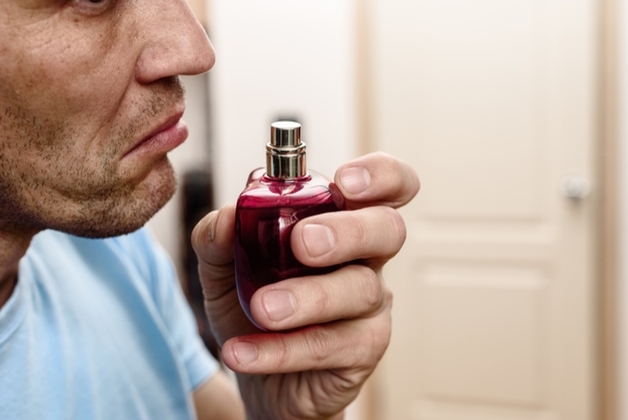Crafting Cosmetic Allergen Disclaimers
Product

Allergen Disclaimers are mandatory in Europe, however as a marketing differentiator, many Indian Brands have also started to either disclose the allergens on the labels or mention claims like “Allergen Free”

Allergen Disclaimers are mandatory in Europe, however as a marketing differentiator, many Indian Brands have started to either disclose the allergens on the labels or mention claims like “Allergen Free”.
When a cosmetic product in Europe contains more than a certain amount of allergens on the list established by the Cosmetic Regulation, warning labels must be included for the benefit of consumers with allergies. Although traditionally associated with fragrances, allergens can also be brought by other components.

What are the common allergens?
While everyone reacts differently to allergens, certain substances have been found to be more likely to cause reactions than others due to their chemical makeup. Some 1–3% of Europeans, as per the CSSC (Scientific Committee on Consumer Safety), are allergic to at least one fragrance ingredient, and these allergens are commonly found among perfume substances.
While everyone is different, it is known that certain substances, due to their structure, can cause more allergic reactions than others. The SCCS (Scientific Committee on Consumer Safety) estimates that 1% to 3% of the European population is allergic to one or more fragrance ingredients.
For cosmetics sold in Europe, the fragrance composition need only be mentioned in the list of ingredients using the generic terms "perfume" or "aroma," rather than providing the precise formula. This clause safeguards the trade secrets of perfume manufacturers, and the inclusion of land makes the list of ingredients more legible. Perfume-sensitive customers, however, have no way of knowing which cosmetics contain what because of inadequate labelling. Because of this, Regulation mandates the labelling of 26 of the most common allergens when their concentration in the final product exceeds a certain limit.
- 10 parts per trillion (ppt) for untouched items.
For products that have been rinsed, the maximum allowable concentration is 0.01% (100 ppm). Annex III of the Regulations contains the full list of allergens; however, familiarity with this list is still highly recommended so that any potential problems with the final product can be avoided (refer pdf).
Please take note that as of the 23rd of August, 2019, hydroxyisohexyl 3-cyclohexene carboxaldehyde has been banned from all newly released products and will be banned permanently as of the 23rd of August, 2021.
Determining whether or not a cosmetic contains any allergens that require labeling:
Fragrance allergen regulation is not unique to European law. Yes, the 26 substances have been added to the relevant IFRA standard following publication of the 49th Amendment of the International Fragrance Association. Thus, their application is limited, typically across all product categories, due to the potential for publicity (induction of an allergy). The manufacturer of the fragrance composition must, therefore, provide not only the IFRA Certificate of Compliance, but also a document detailing the amount of each allergen (if present) in the mixture. The concentration of perfume used in the final product will determine the allergen exposure risk for consumers.
While allergens in perfume are the most common cause of a product needing to be reported, there are other ingredients in the formula that can increase the levels of these allergens. The vast majority of them occur in plants, most notably in essential oils. Due to the use of natural ingredients, the final product may contain allergens in excess of the legal limit, while the amount present in the fragrance concentrate would fall short. That's why monitoring the chemical make-up of raw materials is so crucial (i.e. their content in allergens).
Formulation software is used for allergen management because it stores both raw material data and fragrance composition in one centralised location (provided that the raw material data is properly implemented). Note that if the formula contains natural ingredients, the absence of a fragrance composition does not rule out the presence of allergens.
Adapting Labels for Regulatory Allergen requirements
Allergens that meet the criteria for mandatory labeling must be identified in the ingredient list whenever their concentration in the final product is at or above the established limit. INCI nomenclature dictates that they be placed at the end of the list. To warn customers with allergies about the presence of allergens so they can avoid purchasing the product.
The European Commission has estimated that the vast majority of people who are allergic to these substances can tolerate products containing them below the thresholds it has set for reporting purposes. Even the least sensitive individuals are not immune to the possibility of an allergic reaction. There is no way to define a universally safe exposure threshold for even the most hypersensitive consumers.
Conclusion
European Cosmetic Regulation (CE) n°1223/2009 requires allergen labelling for the purpose of protecting allergic consumers. It is required by law to disclose the presence of these allergens in quantities that exceed the legal limits at the end of the list of ingredients. Assuming that the current allergens list only includes 26 substances, a European Commission consultation could result in the addition of another 62 substances.